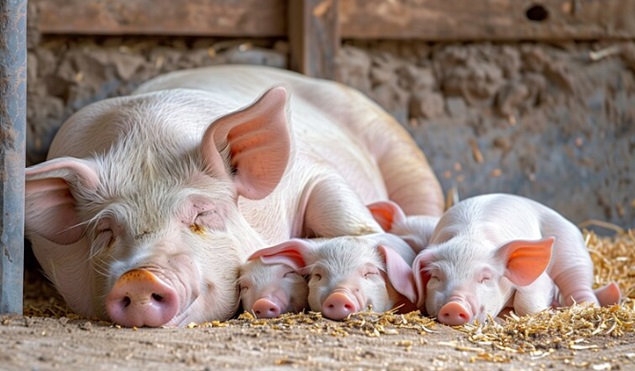
Gilt Selection in Commercial Swine Operations: A Strategic Foundation for Reproductive Longevity and Herd Efficiency
In modern commercial swine production systems, strategic gilt selection plays a pivotal role in shaping the reproductive efficiency and long-term productivity of the sow herd. A recent expert review cited by PigProgress underscores the importance of combining biological, structural, and management-based criteria to ensure consistent, high-level performance.
📊 Optimal Biological Markers at First Breeding
Scientific literature identifies the ideal window for gilt breeding between 230–250 days of age, corresponding to a live body weight of 130–155 kg and backfat thickness between 12–15 mm.
These physiological parameters reflect not only physical maturity but also endocrine readiness, particularly regarding leptin levels, a hormone derived from adipose tissue known to regulate the hypothalamic-pituitary-ovarian axis and support regular estrous cycling.
🥗 Tailored Nutritional Management and Flushing Strategy
From approximately 60 kg body weight, nutritional protocols should be adjusted to achieve a daily gain of 750–800 g, balancing lean tissue accretion and fat deposition.
During the three weeks prior to first insemination, gilts should be fed ad libitum (a flushing phase), stimulating:
- Follicular recruitment
- Ovulation rate
- Conception success
This practice optimizes reproductive output without compromising gilt health or longevity.
🧬 Structural Soundness and Physiological Integrity
Selection criteria must also account for:
- Limb and joint conformation
- Gastrointestinal health
- Overall robustness and metabolic stability
Gilts with well-balanced frame and structural integrity are less prone to lameness, chronic disorders, or early culling due to subclinical stress or poor adaptation to the herd environment.
🐗 Estrus Stimulation and Hormonal Priming
Early estrus detection is critical for breeding synchronization. From 24–26 weeks of age, gilts should be exposed daily to stimulus boars, ensuring:
- Activation of neuroendocrine pathways
- Visual and olfactory stimulation
- Predictable and pronounced estrus behavior
This enhances reproductive predictability and improves the efficiency of artificial insemination timing.
📈 Long-Term Implications for Herd Performance
Well-selected gilts are more likely to complete multiple productive parities, reducing early removals and replacement costs. A science-based selection strategy:
- Increases farrowing rates
- Enhances sow lifetime performance
- Stabilizes the farm's reproductive economy
✅ Conclusion: Gilt Selection Is a Scientific Investment, Not a Random Process




